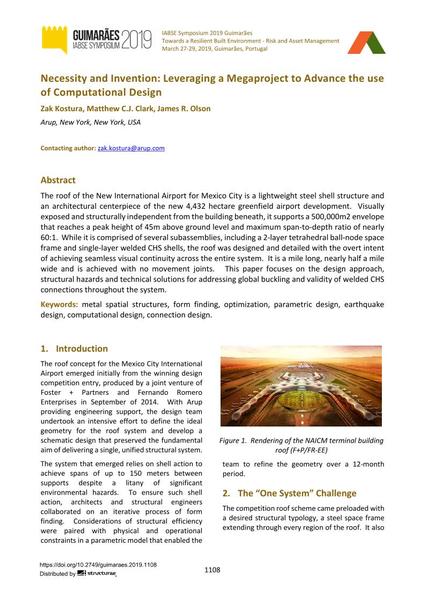Necessity and Invention: Leveraging a Megaproject to Advance the use of Computational Design

|
|
|||||||||||
Détails bibliographiques
| Auteur(s): |
Zak Kostura
(Arup, New York, New York, USA)
Matthew C. J. Clark (Arup, New York, New York, USA) James R. Olson (Arup, New York, New York, USA) |
||||
|---|---|---|---|---|---|
| Médium: | papier de conférence | ||||
| Langue(s): | anglais | ||||
| Conférence: | IABSE Symposium: Towards a Resilient Built Environment Risk and Asset Management, Guimarães, Portugal, 27-29 March 2019 | ||||
| Publié dans: | IABSE Symposium Guimarães 2019 | ||||
|
|||||
| Page(s): | 1108-1115 | ||||
| Nombre total de pages (du PDF): | 8 | ||||
| DOI: | 10.2749/guimaraes.2019.1108 | ||||
| Abstrait: |
The roof of the New International Airport for Mexico City is a lightweight steel shell structure and an architectural centerpiece of the new 4,432 hectare greenfield airport development. Visually exposed and structurally independent from the building beneath, it supports a 500,000m² envelope that reaches a peak height of 45m above ground level and maximum span-to-depth ratio of nearly 60:1. While it is comprised of several subassemblies, including a 2-layer tetrahedral ball-node space frame and single-layer welded CHS shells, the roof was designed and detailed with the overt intent of achieving seamless visual continuity across the entire system. It is a mile long, nearly half a mile wide and is achieved with no movement joints. This paper focuses on the design approach, structural hazards and technical solutions for addressing global buckling and validity of welded CHS connections throughout the system. |
||||
